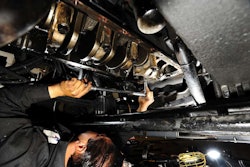Conditions that affect profitability – like driver pay, fuel prices and maintenance – can fluctuate wildly but carrier’s lack the ability to influence freight rates equally as nimbly, which makes auditing freight lanes a critical annual practice.
Freeport, Ill.-based Quality Transport Company began a deep-dive into its contract rates about a year ago and discovered some of its rates were below its cost of doing business. But cashflow can be critical – even on a negative margin – and Senior Vice President Amanda Schuier said the company had to be careful with how it went about carving out a path to improved profitability.
Quality Transport worked with some of its largest customers as part of an ongoing effort to shed some of its red ink-stained lanes.
“We told them we know what it takes for us to run the truck and at this point and when we’re taking these runs out to California, we’re losing money,” Schuier said, “and we were definitely in there with market rates.”
2019 CCJ Solutions Summit: Making Money in a Changing Market
With sessions at the event around:
» Improving your equipment life cycle;
» Turning your maintenance department into a profit center;
» Losing the customers you lose money on;
» Making money off the data you already generate;
» and more,
CCJ Solutions Summit will give you critical information to take your business to the next level. Join us, November 18-20, in Scottsdale, Arizona.
Rather than completely divorcing themselves from the customer, Quality Transport offered to broker the shipper’s freight, allowing the carrier to maintain a relationship with the customer while also carving out a slice of the revenue and reducing its exposure to losses.
They now make money – albeit on a small margin – but Schuier said, “at least can make money on it.”
Not all decisions are as black and white and Schuier said it all comes down to balancing which lanes are profitable and which ones carrier’s are willing to lose a little bit on, and for which customers.
“It’s almost like you have to take some level of [losses], she says. “If we cut every single lane that wasn’t profitable, we’d be having trucks sit.”
For some local drops, Quality Transport initiated a partnership with competitors as part of a load swap agreement where the carriers can trade out unprofitable loads.
“Instead of fighting over customers, it’s like, ‘can we do something together to make it better for each of us,’” she said.
Plains Dedicated CEO John Miller says his company has also had to drop customers, citing a lack of detention pay as a key cause.
“About the time elogs kicked in – about 2018 – detention is changing and we told our customers ‘here are the things that we need to be made whole in hours of service,” he said.
Predictably, the carrier got some initial pushback from their top customers.
“A lot of these guys are treating detention like ‘we’ve already paid you and this is extra pay,’” he said.
Miller said his company dropped its third largest customer over the issue.
“When we walked way from the business, we had our best year ever,” he said, noting the time associated consistently rebooking multiple drops caused by excessive detention made dealing with the customer problematic. “Were so involved in booking and rebooking that the time, even the detention, wasn’t making us whole.”
Plains Dedicated filled that capacity with more loads from smaller customers – a strategy that tripled business with a customer who is now the carrier’s largest.
With ELDs here now an industry standard, Miller says compensation for detention can be an important factor in profit and loses, but capacity growth in 2019 – a trend that is expected to carry over into next year – customers are even more reluctant to pay detention.
“When you don’t pay detention, what are [shippers] saving? A penny a pound? Probably not even that,” Miller says. “You put a driver out of business and in 6 months your rates go up 15 or 20 cents a mile because there’s not as many carriers on the road. You’re not saving any money.”
“At the end of the day,” Miller added, “we all just want to be unloaded. I don’t want pay for sitting because we can be more productive by rolling.”














